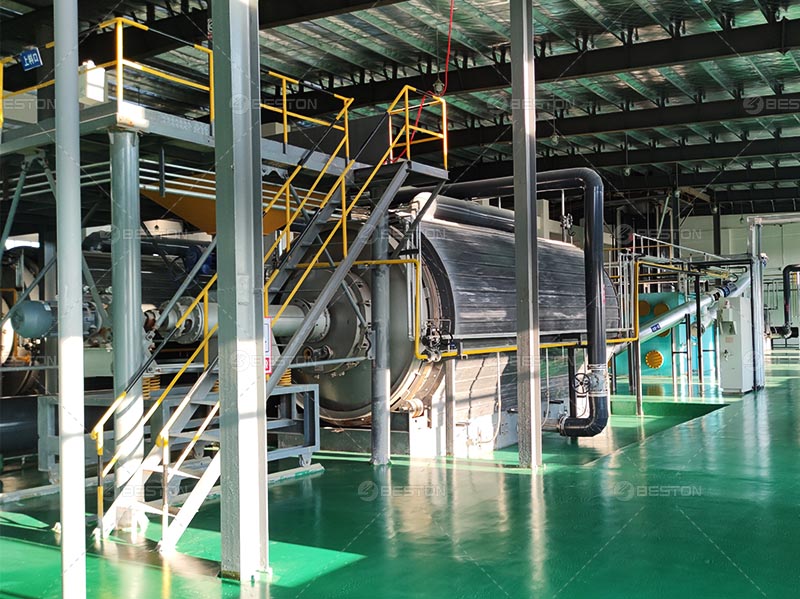Operating a pyrolysis plant efficiently while maintaining cost-effectiveness is critical for maximizing profit margins and ensuring long-term sustainability. Pyrolysis, the process of thermally decomposing organic material such as plastic, tires, and biomass, requires significant capital and operational expenditure. However, several strategies can help reduce costs and enhance the profitability of pyrolysis operations without compromising on the quality of output or safety standards.
One of the most effective ways to reduce operational costs in a pyrolysis plant is by optimizing energy consumption. Pyrolysis requires a high temperature for the decomposition of feedstocks, which can lead to significant energy usage. However, recovering and reusing energy from the system can substantially lower energy costs. By implementing energy recovery systems, such as using the gases produced during pyrolysis to fuel the furnace, plants can reduce reliance on external energy sources. The use of heat exchangers to capture and recycle heat within the system also contributes to energy efficiency.
Additionally, ensuring that the system is well-insulated minimizes heat loss, thereby reducing the need for additional fuel to maintain the required temperature. These energy-efficient practices reduce fuel costs, making the operation more sustainable and profitable in the long run.

The preparation of feedstock is another critical element in pyrolysis plant cost. The composition and moisture content of feedstock significantly impact the efficiency of the pyrolysis plant. Feedstocks with high moisture content require more energy to heat, resulting in higher operational costs. By drying the feedstock before introducing it into the pyrolysis unit, energy consumption can be reduced.
Moreover, ensuring that the feedstock is consistently sized and free from contaminants helps improve the efficiency of the pyrolysis process. Using automated sorting and pre-processing systems can significantly reduce the labor and time required for feedstock preparation, which translates into cost savings. Using uniform feedstock ensures smoother operations and prevents potential damage to equipment, further lowering maintenance and repair costs.
Implementing real-time monitoring systems and automated control technologies can provide significant cost savings by reducing inefficiencies in the pyrolysis plant. By constantly monitoring critical parameters such as temperature, pressure, and reaction time, operators can adjust the process in real-time to optimize performance. This reduces energy consumption and minimizes the risk of over-processing or under-processing feedstock, both of which can negatively impact the cost-effectiveness of the operation.
Advanced sensors and predictive maintenance tools can also detect issues before they escalate into expensive breakdowns. By preventing equipment failures through timely intervention, the plant can operate more reliably, avoiding costly downtime and repair expenses.
In a pyrolysis plant, the by-products—gas, oil, and char—can be valuable resources if managed and utilized efficiently. The gas produced during pyrolysis, typically a mixture of methane, ethylene, and other hydrocarbons, can be captured and used as fuel to power the system, further reducing external fuel costs. Additionally, the oil produced can be refined and sold, providing an additional revenue stream.
Char, a solid by-product of pyrolysis, can be utilized in various industries, such as agriculture (as biochar) or in the production of activated carbon. By strategically managing these by-products and identifying ways to monetize them, a pyrolysis plant can offset operational costs and improve overall profitability.
Another significant opportunity for cost reduction lies in upgrading and maintaining equipment. Over time, pyrolysis equipment can experience wear and tear, which can lead to inefficiencies and increased energy consumption. By investing in high-efficiency pyrolysis systems and ensuring regular maintenance, operators can reduce the risk of breakdowns and improve overall system efficiency.
Modern pyrolysis plants often incorporate advanced technologies such as automated feeding systems, temperature regulation systems, and enhanced gas treatment technologies, all of which can improve process efficiency and reduce operating costs. Additionally, newer equipment is typically designed to process a wider range of feedstocks with minimal adjustments, further enhancing plant flexibility and cost-effectiveness.
Scaling up operations in a pyrolysis plant can lead to significant cost reductions. Larger-scale plants can take advantage of bulk purchasing, optimize production processes, and achieve higher throughputs, all of which contribute to a reduction in unit costs. Additionally, the larger the plant, the more cost-effective it becomes to operate with a streamlined workforce and improved resource allocation.
However, scaling up requires careful consideration of feedstock availability, infrastructure costs, and environmental regulations. While economies of scale can reduce costs, they must be balanced with the market demand for the pyrolysis plant's output to ensure long-term profitability.
The cost of feedstock can fluctuate depending on market conditions. By establishing contracts with reliable suppliers and considering alternative feedstocks (such as agricultural waste or post-consumer plastics), a pyrolysis plant can secure more affordable and stable feedstock prices. Additionally, working with local suppliers reduces transportation costs and associated environmental impacts, which enhances both the plant's sustainability and profitability.
Some plants may also explore using waste materials from nearby industries, such as municipal solid waste or rubber waste from tire recycling, thus lowering feedstock procurement costs.
Pyrolysis operations generate wastewater as a by-product, especially when processing certain feedstocks. Managing wastewater effectively can result in significant cost savings by reducing disposal fees and preventing contamination. By implementing advanced filtration and treatment systems, a pyrolysis plant can recycle water for use within the plant, reducing the need for fresh water and lowering operational costs.
Wastewater treatment technologies such as reverse osmosis or chemical precipitation can help ensure that the water released back into the environment is safe, which reduces compliance costs associated with environmental regulations.